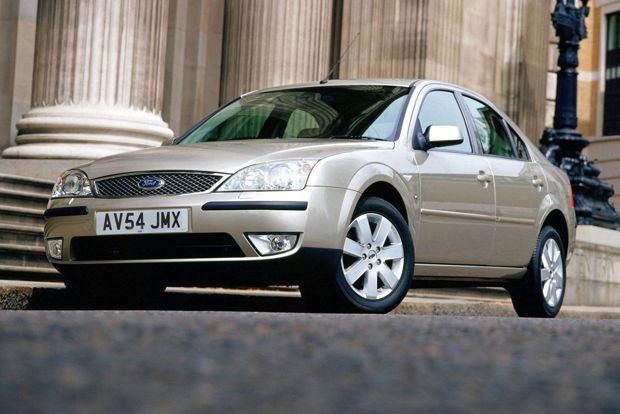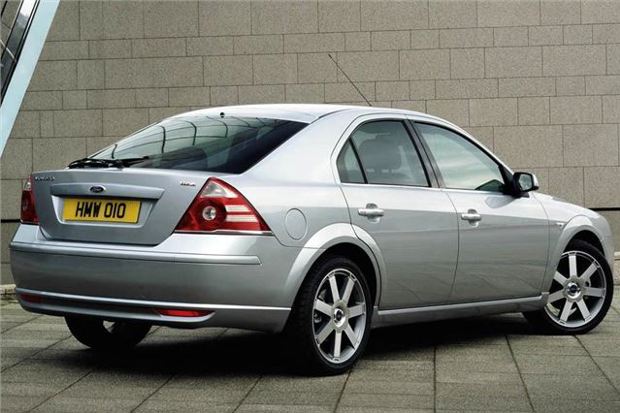Future Classic Friday: Ford Mondeo Mk3

Few cars have had as rapturous a reception as the Ford Mondeo, which was launched towards the end of the year 2000.
Ford’s fleet favourite had big shoes to fill, with the Mk1 Ford Mondeo and the Mk2 (effectively a Mk1 facelift) still being hailed as the finest handling mid-size hatch and saloon on the market, despite being seven years old.
The Ford Mondeo was a strong seller, too. Although by 2000 the trend towards SUVs and compact MPVs had started to erode some of the traditional ‘D-Sector’ sales, the Ford Mondeo was still shifting 80,000 a year, which is more than five times the final model’s volume.
The Ford Mondeo Mk3, then, was critically important for Ford. It had to at least match its predecessor’s reputation for fine handling, while at the same time offering good value for money to fleet managers, company car drivers and private punters alike.
Ford hit the jackpot straight away - not only was the new Ford Mondeo a terrific steer, with roadholding that was clearly the best in its class and more than a match for German premium models, but it was also a handsome car.
It took the ‘New-Edge’ styling features that defined the Ford Ka and the Ford Focus, but in a more refined, less overtly angular package. Whichever body style you chose - hatchback, saloon or estate - you got a fine looking car that looked and felt sturdy.
The interior was comfortable and spacious, with a distinctive four-spoke steering wheel and chunky, squared-off switchgear that looked pretty sharp at the time, but perhaps hasn’t aged as well as the Ford Mondeo’s exterior styling, while the oval dashboard clock was a nod to the shape of the Ford logo.

The new Ford Mondeo was also the first Ford model to introduce the brand’s new tie-in with Sony for in-car entertainment, and while the Ford Mondeo’s CD-Radio systems might look old hat today, back then they were the best on the market, with fabulous sound quality even today.
Indeed, the only weak link when the Ford Mondeo first appeared was the direct-injection diesel engine, with the 1.8-litre unit carried over from the Ford Focus and previous Ford Mondeo.
Compared to the Ford Zetec petrol units, all of which offered decent performance and refinement, the diesel was noisy and agricultural in its power delivery.
It would be a further two years before a decent diesel was offered in the Ford Mondeo range - the 2.0 TDCi - and not before time, as by then the fleet market had shifted from a 70:30 split in favour of petrol engines toward an identical balance the other way.
With the new diesel engines, a new performance flagship in the form of the Ford Mondeo ST220 and some minor interior revisions to bring it more upmarket, the Ford Mondeo was an appealing package, especially once depreciation kicked in and it started to offer exceptional used value.

Indeed, like volume Fords, it was a victim of its own success, and as a result it became banger fodder much sooner than many of its rivals. For the last seven or eight years, you’ve been able to pick up a Ford Mondeo Mk3 for less than £500. For that you get a reliable, comfortable and fine handling car.
Rust can be a problem, especially around the sills, but the Mk3 Ford Mondeo is usually more rust-resilient than most other Fords of the era and if the sills are okay, then the rest most likely is, too.
Other than that, it’s just the usual wear and tear that you have to look out for. Quite a few Ford Mondeos covered lunar mileages during their lives, so it’s not unusual to find one that’s mechanically worn-out - there’s enough choice on the market to avoid such cars completely.
And if you do, then you’ll end up with a car that’s still very good at doing what it was designed for even today - that is, ferrying families up and down the motorway network in comfort and refinement.
There aren’t many classics you can say that about, and while the Mk3 Ford Mondeo still lurks largely in the disposable old clunker market, the oldest examples are almost 19 years old.
Given how quickly tidy Mk1 and Mk2 Ford Mondeos get eagerly snapped up by enthusiasts today, it won’t be long before the Mk3 stirs the same type of nostalgia. Except, by then, most will have disappeared.
If you find a good one now, ideally a Ghia or Ghia X, look after it and enjoy it, you’ll probably make a profit as well as get to enjoy one of the best cars that Ford ever made. Find a classic Ford for sale.
Is a Ford Mondeo ST220 a good investment?


